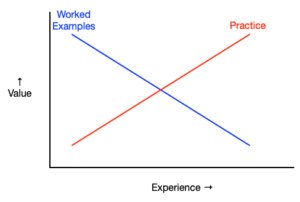Last week, in our Learning Development Accelerator You Oughta Know session, we had Harold Jarche as a guest. Harold’s known for many things, but in particular his approach to continual learning. Amongst the things he shared was a collection of others’ approaches. I checked and I hadn’t made a contribution! So with no further ado, here’s my personal knowledge management approach.
First, Harold’s Personal Knowledge Management (PKM) model has three components: seek, sense, and share. Seeking is about information coming in, that is, what you’re looking for and the feeds you track. It can be in any conceivable channel, and one of the important things is that it’s your seeking. Then, you make sense of what comes in, finding ways to comprehend and make use of it. The final step is to share back out the sense you’ve made. It’s a notion of contributing back. Importantly, it’s not that necessarily anybody consumes what you share, but the fact that you’ve prepared it for others is part of the benefit you receive.
Seek
Most seeking is two-fold, and mine’s no exception. First of all there’s the ‘as needed’ searches for specific information. Here I typically use DuckDuckGo as my search engine, and often end up at Wikipedia. With much experience, I trust it. If there are multiple hits and not a definitive one, I’ll scan the sources as well as the title, and likely open several. Then I review them until I’m happy.
The second part is the feeds. I have a number of blogs I’m subscribed to. There are also the people I follow on Twitter. On LinkedIn, a while ago I actively removed all my follows on my connections, and only retained ones for folks I trust. As I add new people, I similarly make a selection of those I know to trust, and ones who look interesting from a role, domain, location, or other diversity factor. An important element is to be active in selecting feeds, and even review your selections from time to time.
Sense
Sometimes, I’m looking for a specific answer, and it gets put into my work. Other times, it’s about processing something I’ve come across. It may lead me to diagramming, or writing up something, frequently both (as here). Diagramming is about trying to come to grip with conceptual relationships by mapping them to spatial ones. Writing is about creating a narrative around it.
Another thing I do is apply knowledge, that is put it into action. This can be in a design, or in writing something up. This is different than just writing, for me. That is, I’m not just explaining it, I’m using it in a solution.
Share
To share, I do things like blog, do presentations and workshop, and write books. I also write articles, and sometimes just RT. Harold mentioned, during the session, that sharing should be more than just passing it on, but also adding value. However, I do sometimes just like or share things, thinking spreading it to a different audience is value. If you’re not too prolific in your output, I reckon that the selected shares add value. Of course, in general if I pass things on I do try to make a note, such as when sharing someone else’s blog that I thought particularly valuable.
So that’s my process. It’s evolving, of course. We talked about how our approaches have changed; we’ve both dropped the quantity of posts, for instance. We’re also continually updating our tools, too. I’ve previously noted how comments that used to appear on my blog now appear on LinkedIn.
To be fair, it’s also worth noting that this approach scales. So workgroups and communities can do a similar approach to continually processing. Harold’s done it in orgs, and it factors nicely into social learning as well. One attendee immediately thought about how it could be used in training sessions!
So that’s a rough cut at my PKM process. I invite you to reflect on yours, and share it with Harold as well!
I discuss PKM in both my Revolutionize L&D book, and my Learning Science book.


